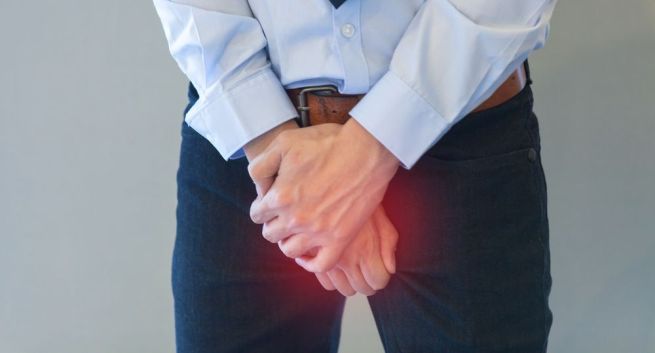Many men are unaware of having a yeast infection as it progress in males in asymptotic form. Most men contract the infection from their partners, as women are more susceptible to develop yeast infections. In women, the condition is easily identifiable as a host of symptoms manifest within a brief period of contacting the infection. However, most men do not know they have it till they are either informed by their partners or through a medical examination. Yeast infection in men is contracted through unprotected sex. This is the only method through which the infection can enter the body. Such infections can cause extreme discomfort and irritation. Therefore, it is important to realize that men too are prone to contacting yeast infections, contrary to the myth that only women suffer from this disease. Being knowledgeable about its symptoms and the available treatment options can help people be rid of this condition.

Waht Are the Symptoms of Male Yeast Infection?
Unlike a vaginal yeast infection, a penile yeast infection may not always have symptoms, especially during its progression stages. However, when symptoms start manifesting, they can be extremely discomforting. Some common symptoms of a penile yeast infection are:
- Burning sensation when passing urine
- Sores on the foreskin of the genital organ
- Irritation and itchiness
- White discharge, similar to a vaginal infection
- Discomfort during sexual intercourse
- Redness and inflammation on top of the penis
- Indigestion
- Increased desire for sweets
Men with yeast infections may also experience mood swings and temporary lapse in memory. Furthermore, penile yeast infections can also cause problems with the prostate. Therefore any signs of penile yeast infections should be checked out medically as soon as possible.
What Causes Male Yeast Infections?
It is common for a healthy human body to have yeast present in their body. These organisms are part and parcel of the dermal structure and various bacteria in the body keeps these organisms under control. However, any changes to the immune system can result in an overgrowth of yeast. For example, HIV or AIDS patients or patients undergoing chemotherapy may be more likely to develop a yeast infection because of their weakened immune systems. There are several other factors that cause the growth of yeast in the body. Below are some of the key factors that can trigger off a yeast overgrowth, leading to an infection.
- Antibiotic use - Antibiotics are often prescribed by doctors for treating various bacterial infections. Long-term antibiotic use can destroy healthy bacteria, enabling yeast fungi to take over and grow.
- Diabetes - Yeast thrives on glucose. This is the reasons why men with diabetes may suffer often with yeast infections. The high glucose content in the urine makes the body an extremely suitable place for yeast to thrive.
- Mercury Poisoning - Yeast cells absorb its weight in mercury preventing harm to the body. However, yeast thrives in elevated mercury levels.
- Foods - Certain foods can also increase the growth of yeast. The typical American diet is quite susceptible to the overgrowth of yeast. For example, wheat, oats, barley and peanuts, corn and red apples encourage the growth of yeast in the body. Beer too encourages the growth of yeast.
How to Treat Male Yeast Infections
There are various methods of treating yeast infections in men. Considering some of these methods can help relieve the pain and discomfort associated with this condition. For example, there are various herbal antifungal remedies that cure yeast infections. These include Gentian Violet, organic coconut oil, and organic oregano oil, grape seed extracts and garlic and carrot juice. There are several over-the-counter and prescription drugs that can be purchased for treating this condition too. Nizoral and Diflucan are common medications for treating yeast infections. Apart from this, topical antifungal creams, such as, Clotrimazole, Miconazole and Isocanazole are also available for treatment. Fungi thrive in moist environments. Therefore, all men should ensure that they keep their genital areas as dry as possible. Removal of excess hair is also recommended as this cause dampness and propensity to create humid and sweaty conditions in which yeast colonies thrive.
A male yeast infection is both unpleasant and embarrassing to the affected person. It can be extremely discomforting and painful. Understanding its causes and symptoms as well as treatment methods will help not only those already affected with yeast infections but for all men in general as it can help in prevention as well as diagnosis.
